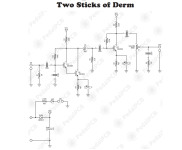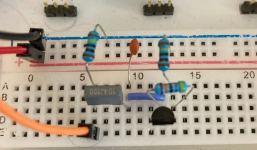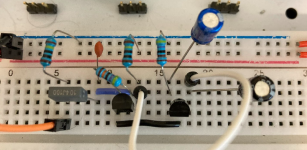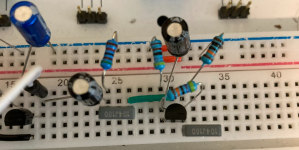BuddytheReow
Moderator
Hey All,
Been a looooong time since I've posted one of these sweet breadboard tutorials. My new job is pretty demanding, so unfortunately I'm going to have to do this in parts. Please be patient with me. I should have this done in a day or two.
Two Stick of Derm Fuzz. As the name suggests, this is a great 1-knob doom machine. 9 resistors, 9 capacitors, 3 common transistors, and a volume pot. That's it. A bit more complicated than a Fuzz Face, but not by much.
Below is the schematic and my finished breadboard. I will walk through how to transform one into the other shortly. Consider this post a sweet preview. Please keep scrolling through this thread for the rest of the steps.
BuddytheReow


Been a looooong time since I've posted one of these sweet breadboard tutorials. My new job is pretty demanding, so unfortunately I'm going to have to do this in parts. Please be patient with me. I should have this done in a day or two.
Two Stick of Derm Fuzz. As the name suggests, this is a great 1-knob doom machine. 9 resistors, 9 capacitors, 3 common transistors, and a volume pot. That's it. A bit more complicated than a Fuzz Face, but not by much.
Below is the schematic and my finished breadboard. I will walk through how to transform one into the other shortly. Consider this post a sweet preview. Please keep scrolling through this thread for the rest of the steps.
BuddytheReow







